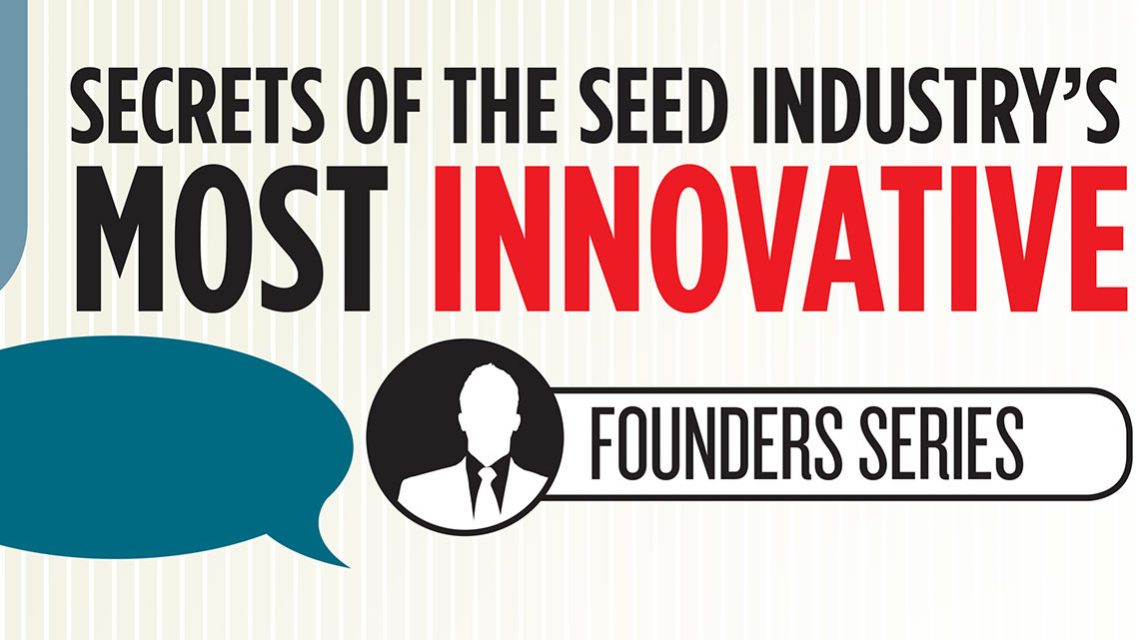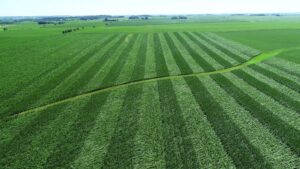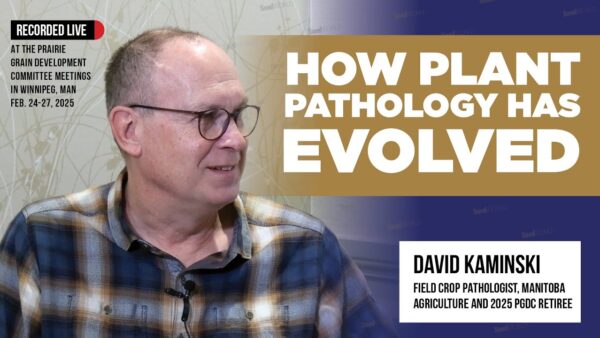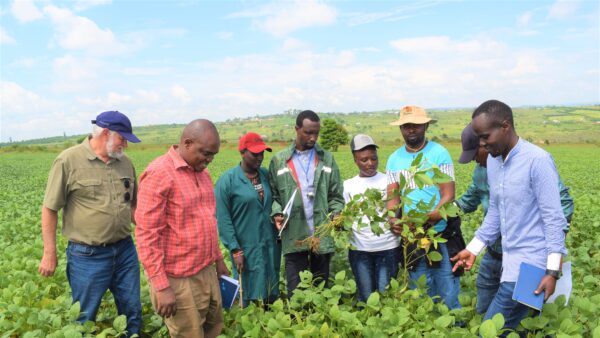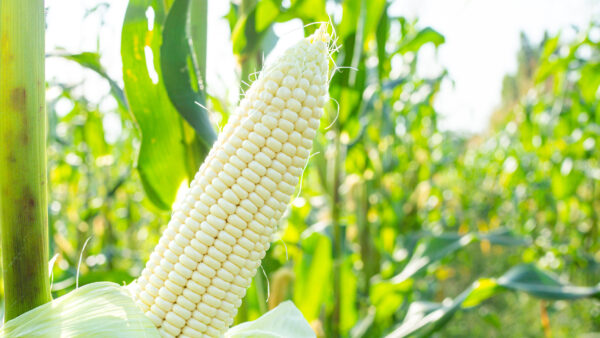While it’s critical to look ahead, it’s also important to remember our history and reflect upon the progress that’s been made. Discover the faces behind that progress and today’s seed industry.
To say that the seed industry has experienced change since the inception of Seed World is a gross understatement. One hundred years ago, there were no computers, no biotechnology, no bioinformatics, no sensors for sorting, and certainly no Internet. In fact, a great deal of the work done in the seed industry was still done by hand, and the home gardening sector accounted for a much larger share of the market than it does today.
This article is the first in a series that looks to recognize, in no particular order, 100 individuals who have truly been transformational in the seed industry. They have provided leadership during trying times, insight to complex issues, and a commitment to something larger than self. The 100 founders of the seed industry that we’ve chosen to represent the dramatic changes during the past century have all left a tremendous mark — be it in plant breeding, technology, business or the policy arena — that impacts the seed industry. As a group, they represent the industry’s diversity and hail from all over the world.
We know the progress and advancements realized today have not been accomplished by just 100 people. It has required hundreds of thousands of dedicated individuals throughout this rich and highly textured industry, as well as the creativity, drive and fortitude of people like you. So think of this list only as a beginning, and feel free to contribute the names of individuals whom you think have left their mark on the industry to news@issuesink.com.
Harry Stine
Stine Seed Company, which Harry’s father originally founded in the 1950s as Stine Seed Farm, and its affiliates now own more than 800 patents, at least 750 of which are directly related to soybeans.
Harry Stine grew up on the seed farm outside of Des Moines, Iowa. He began dabbling in seed breeding in the 1960s, and after realizing the potential of a future there, he began a soybean breeding program, which had previously only been done by universities.
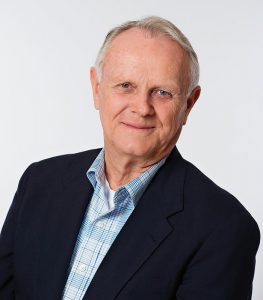
By 1973, Stine and Bill Eby formed Midwest Oilseeds, which today is the soybean genetics licensing company of choice. Since then, Stine quietly built some of the most genetically robust and highest-yielding soybean seeds in the industry. He was one of the first to patent the genetics of the soybean in the early 1990s and, as a businessman, negotiated deals licensing the genetics to companies such as Monsanto and DuPont. Also during that time, Stine began selling corn and soft red winter wheat.
Today, Stine Seed employs nearly 400 people in 16 states, including three of his children — Brenda, Myron and Warren. The Stine’s develop corn genetics and biotechnology traits for the seed industry. On the corn side, Stine has a number of new high-yield genetics under development.
Harry hopes to revolutionize how corn is grown, and thereby double world corn output. He has bred corn to grow at a higher density with shorter plants and leaves that attract more sunlight. Additionally, this corn can be planted in narrower rows, significantly increasing yields.
“That’s bringing a very new twist to hybrid corn production, which is a lot of fun,” Myron says. “It’s not simply taking corn hybrids and planting them thicker. It’s actually changing the genetics to work in that environment.”
According to Forbes, Stine Seed Company is America’s largest privately-owned seed company, and the fourth largest seed company overall.
“It’s not simply taking corn hybrids and planting them thicker. It’s actually changing the genetics to work in that environment.”
— Myron Stine
B.R. Barwale
As a young man in the 1950s, B.R. Barwale looked around recently independent India and saw small farmers, just like him, tending their few acres. He, like the others, hoped the crop would produce enough to sell, but often there wasn’t even enough to feed the farmer’s household.
But that isn’t all he saw. Barwale saw opportunity, not only for himself but for the countless men and women toiling in their fields. When he got a hold of some high-yielding okra seed in the late 1950s, he was impressed and decided that he should grow the crop for seeds and sell them at reasonable prices to other farmers.
Seeing how new hybrids could transform the lives of some of the poorest people in his country, Barwale founded Maharashtra Hybrid Seeds Company, known as Mahyco, and invested himself in the cause of revolutionizing India’s seed industry, branching out to other crops.
By 1964, Barwale was selling seeds across the country, specifically to smaller farms at low prices. He spent time working with illiterate farmers to demonstrate new hybrid technologies and helped them finance investments to grow their operations.
“Ideas won’t keep. Something must be done about them.”
— Alfred North Whitehead
Soon, Mahyco was starting its own research programs, eventually opening the Mahyco Life Sciences Research Center to push Asia’s advancement of seed research.
More than 50 years after Barwale sold his first batch of okra seeds to his neighbors, his company contracts with more than 100,000 growers. Since then, seed distribution in India has grown 40-fold.
“Cultivators of the earth are the most valuable citizens. They are the most vigorous, the most independent, the most virtuous, and they are tied to their country and wedded to it’s liberty and interests by the most lasting bonds.”
— Thomas Jefferson
In 1998, Barwale received the World Food Prize award and invested that money into research for hybrid rice varieties.
Barwale firmly believes that feeding and caring for the people of India is “God’s work,” as he once told Businessweek.
“The secret of improved plant breeding, apart from scientific knowledge, is love.”
— Luther Burbank
Yuan Longping
Known the “Father of Hybrid Rice,” Yuan Longping has many awards to his credit. The most notable is the World Food Prize he received in 2004 for his breakthrough achievement in developing the genetic materials and technologies essential for breeding high-yielding hybrid rice varieties.
Born in Beijing, China, in 1930, Yuan is recognized as the first scientist to successfully alter the self-pollinating characteristics of rice and facilitate the large-scale production of hybrid rice, which has 20 percent more yield than elite inbred varieties. Yuan began his lifelong work in agriculture in 1953 after completing agronomy studies at Southwestern Agricultural College in Chongqing, China.
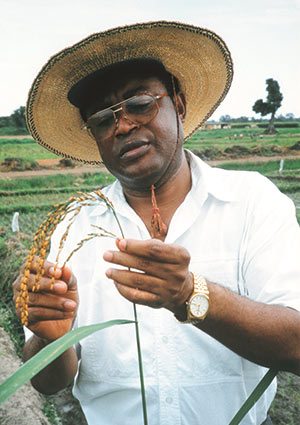
He began research on developing hybrid rice in 1964, at a time when it was widely accepted that hybrid vigor — or heterosis — could not be bred in a self-pollinated crop such as rice. Nevertheless, Yuan firmly believed that heterosis is a universal phenomenon and could be applied to rice crops. He was able to breed a unique set of genetic tools that enabled the development of hybrid rice, and his new varieties were put into commercial production in China in 1976.
Yuan has continued his scientific exploration into new approaches to enhance the heterosis level and to simplify the methodology for hybrid rice breeding. He has led a project to develop a ‘super hybrid rice’ which has an additional yield increase potential of 20 percent. Yuan’s new hybrid rice technology has not only provided tremendous benefits for China, but also has been enthusiastically adopted in other countries.
Since Chinese hybrid rice was introduced to the world in 1979, Yuan and his research associates have traveled to India, Vietnam, Myanmar, Bangladesh, Sri Lanka and the United States to provide advice and consultation to rice research personnel.
Yuan’s legacy is truly global in scope. His research institute has trained more than 3,000 scientists from more 50 countries, and farmers around the world continue to benefit from his techniques with the spread and adoption of hybrid rice throughout Asia, Africa and the Americas.
Monty Jones
From his early days in Sierra Leone, Monty Jones dreamed of helping feed the world. After completing his primary education, Jones received a fellowship from the Food and Agriculture Organization of the United Nations, allowing him to move to the United Kingdom to study at Birmingham University.
Despite his white collar background and encouragement from family to become a priest, Jones pursued the field of agriculture. In 1979 he received a master’s degree and in 1983 a doctorate in plant biology. The rest, as they say, is history.
Jones began his career as a rice breeder with the West Africa Rice Development Agency (WARDA), one of the international research centers sponsored by the Consultative Group on International Agricultural Research. The 1985 rice riots in Sierra Leone, catalyzed by a shortage of rice, strengthened Jones’ resolve to become a rice researcher.
In 1991, Jones was appointed head of WARDA’s Upland Rice Breeding Program, then located in Côte d’Ivoire.
He was among the first agricultural scientists to understand that Africa needed to do its own research and develop technologies adapted to its specific conditions. He was also among the first to realize the value of Africa’s indigenous rice species as a rich reservoir of genes for resistance to several local stresses.
In 1994, Jones and his team succeeded for the first time in producing fertile progenies — “New Rice for Africa” later dubbed NERICA — by crossing an Asian (Oryza sativa) rice species with an African (O. glaberrima) rice species. Crossing different species is notoriously difficult because of the high probability of sterility in the offspring.
With the ability to resist weeds, survive droughts, and thrive on poor soils gained from its African parent, the popular NERICA varieties outperformed its parents.
Thanks to NERICA’s ability to increase farmers’ harvests by 25 to 250 percent, Africa was catapulted almost overnight from relative obscurity among the international rice research and development community into the limelight.
“Agriculture is Africa’s dominant industry so it follows that the commercial banks have a huge opportunity and responsibility in assisting the development.”
— Monty Jones
For his work, Jones was awarded the World Food Prize in 2004 — the United Nations’ Food and Agricultural Organization’s International Year of Rice.
“Some small-scale producers are so lacking in resources that they are merely scratching a living from day-to-day and cannot produce marketable surpluses,” Jones says. “They need a cash injection and often readily available innovations to break out of the poverty trap and have the means to stop having to mine their land and invest in improvements. Agriculture is Africa’s dominant industry so it follows that the commercial banks have a huge opportunity and responsibility in assisting the development.”
Jones was appointed the executive secretary of the Forum for Agricultural Research in Africa, based in Ghana. At FARA, he oversees advocacy and coordination efforts in support of regional research.
Because of his many firsts and continued dedication, Time magazine named Jones as one of the world’s most influential people in 2007.
Henry Beachell
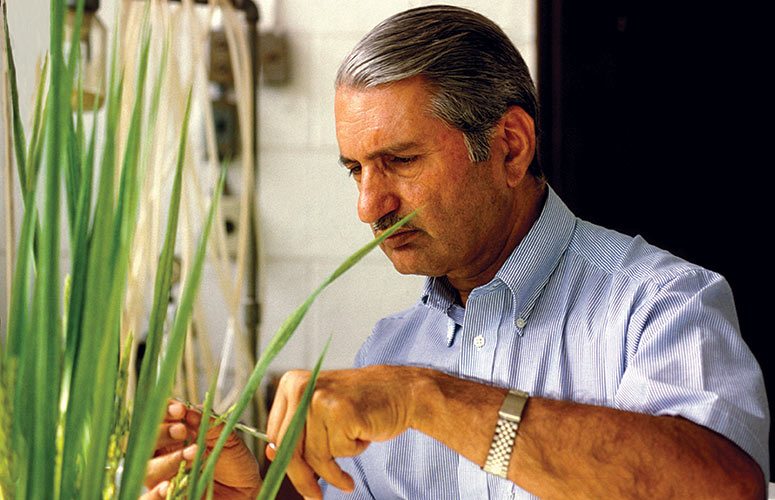
There is a lot a person can do after retirement, but it’s rare that those accomplishments include feeding billions of people across the world.
Henry Beachell did just that with his IR8 rice, a variety that responded well to fertilizers, was resistant to pests and produced more than double the amount of rice that traditional plants were yielding.
Today, most of the rice grown in the world comes from plants that built on Beachell’s work, but the World Food Prize laureate never even planned to work on rice.
After finishing degrees at the University of Nebraska and Kansas State University, Beachell intended to devote his career toward researching wheat. But he was offered a job with the U.S. Department of Agriculture to study rice — an occurrence that billions of people might be thankful for.
From 1931 to 1963, Beachell’s work greatly improved rice varieties in the United States. After he retired, Beachell went to work at the International Rice Research Institute in the Philippines where his breakthrough IR8 rice variety revolutionized the crop in the 1960s.
IR8 was short, sturdy and more resistant to the pests that plagued traditional varieties. Instead of 1 to 2 tons of grain per hectare, growers started averaging 4 or 5 tons. Some saw as much as 10 tons.
But Beachell wasn’t finished. IR8 was still susceptible to certain pests, and it was considered an inferior cooking rice=. Beachell took many colleagues under his wing, including Gurdev Khush, with whom Beachell shared the 1996 World Food Prize. Khush solved many of IR8’s problems with IR36, which grew even faster and produced grain that was desirable to consumers.
Beachell worked all his life, consulting with Rice-Tec, the first company to commercialize hybrid rice seed in the United States. He lived to see his 100th birthday, dying in 2006 in his Texas home.
Gurdev Khush
“While his name may have passed the lips of many, his life’s work passed the lips of almost half mankind,” shares Ronald Cantrell, former director general of IRRI, in summing up the contributions of Gurdev Khush.
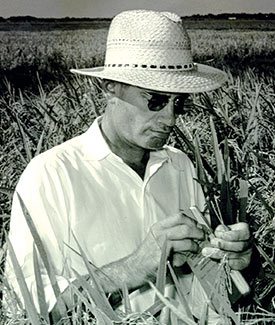
In the 1960s, rice growers were producing about 250 tons of the grain staple each year, but it wasn’t enough. The populations of southeast Asia were, and still are, booming. And food production wasn’t keeping up with the demand.
It was about that time that Gurdev Khush was hired at the International Rice Research Institute. Khush, the son of a wheat farmer in northern India, was pushed toward education by his father. He graduated from Punjab Agricultural University, traveled to England and worked in a factory to save up to attend the University of California, Davis, where he worked on tomato genetics.
Khush was head of plant breeding at IRRI within five years of being hired and was mentored by Henry Beachell.
Khush built off Beachell’s signature accomplishment, a high-producing variety of rice called IR8, which had significantly improved crop production and protection.
Through his work, IR36 was born.IR36 is considered the most widely planted food crop in the world. In the 50 years since its creation, rice production increased from 257 million tons to 686 million tons per year. The shorter, sturdier plant Khush developed is resistant to more pests and produces a grain that is desirable to consumers, increasing profits for growers.
IR36 has been built upon several times, including IR72, which became the highest-yielding rice crop in the world in the early 1990s.
After his 2002 retirement from IRRI, Khush became an adjunct faculty member at UC-Davis to continue training future scientists. Khush is considered one of the fathers of the Green Revolution, a series of research developments that significantly increased food production, especially in some of the poorest countries in the world.
Surinder Vasal
Breeding and advancing quality protein maize (QPM) to improve productivity and nutrition in malnourished and poverty-stricken areas worldwide has been Surinder Vasal’s mission since 1959.
It was then that India’s Vasal launched his career as a researcher for the Department of Agriculture in Himachal Pradesh and later worked as a maize breeder at Himachal Agricultural College.
Vasal took up his first assignment outside India in 1967, working with the Rockefeller Foundation in Thailand researching maize in close collaboration with the National Corn and Sorghum Research Center of Kasetsart University. Here, Vasal was confronted by a problem: conventional maize is a poor-quality food staple, often leading to malnutrition.
Combining cereal chemistry and plant breeding techniques, Vasal worked with colleague Evangelina Villegas to combine conventional maize with genetic modifiers. Throughout the 1970s, they produced and analyzed germplasm at an astonishing rate, sometimes processing up to 25,000 samples a year. By the mid-1980s, the team had produced a QPM germplasm with hard kernel characteristics and taste similar to the traditional grain, and with much higher nutritional content.
Vasal was recognized with the 2000 World Food Prize for his efforts boosting the nutritional content of maize. From 1985 to 1996, Vasal went on to coordinate International Maize and Wheat Improvement Center’s (CIMMYT) germplasm program and Lowland Tropical Maize Program, which introduced the first set of 58 tropical and 42 subtropical lines. Another additional 62 tropical white and yellow lines were developed in the 1990s.
Taking on a new role in 1997, Vasal began leading CIMMYT’s Asian Regional Maize Program in Thailand. He has strengthened regional hybrid research activities and coordinates the Tropical Asian Maize Network.
“Maize is perhaps one of a few crops offering so many options in the production of a wide variety of maize hybrids,” Vasal says, explaining its unlimited potential. “Besides, a wide range of progenitors can be used in forming hybrids of both conventional and non-conventional types.”
Evangelina Villegas
Evangelina Villegas’ accomplishments are many, but she’s perhaps best known for being the first woman awarded the World Food Prize. She was honored for her groundbreaking work — done in collaboration with Surinder Vasal — on the development of quality protein maize (QPM).
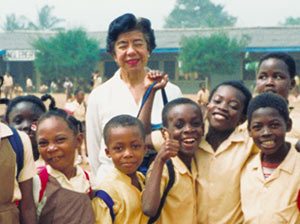
Born in Mexico City, she began her career in 1950 as a researcher at Mexico’s National Institute of Nutrition and at the Special Studies Office, which was cosponsored by the Rockefeller Foundation and the Mexican Secretary of Agriculture and Livestock and later was converted into the International Maize and Wheat Improvement Center (CIMMYT).
It was there she met Vasal. Villegas was in charge of the lab investigating protein quality and Vasal was a plant breeder assigned to work on developing QPM — a new kind of modified maize with far better nutritional quality than conventional maize, which often leads to malnutrition in developing nations.
Along with Vasal, Villegas developed a QPM germplasm with much higher nutritional value than conventional maize. Finally, in the early 1990s, CIMMYT gained the international support and funding to promote the QPM maize variety in Africa. Since then, QPM has also saved lives in China, Mexico and Central America.
In 2000, former Mexican president Ernesto Zedillo presented Villegas with the 2000 Woman of the Year Award, sponsored by the Mexican Women’s Association.
“What I would like to do with this prize is make the world more aware of what we have developed,” Villegas says. “Because for me, the greatest honor, as a Mexican, would be to see the fields of Mexico overflowing with QPM maize.”

This article will continue to unfold through 2015, so check out the latest additions to our Founders of the Seed Industry list at 100YearsOfGrowth.com.


